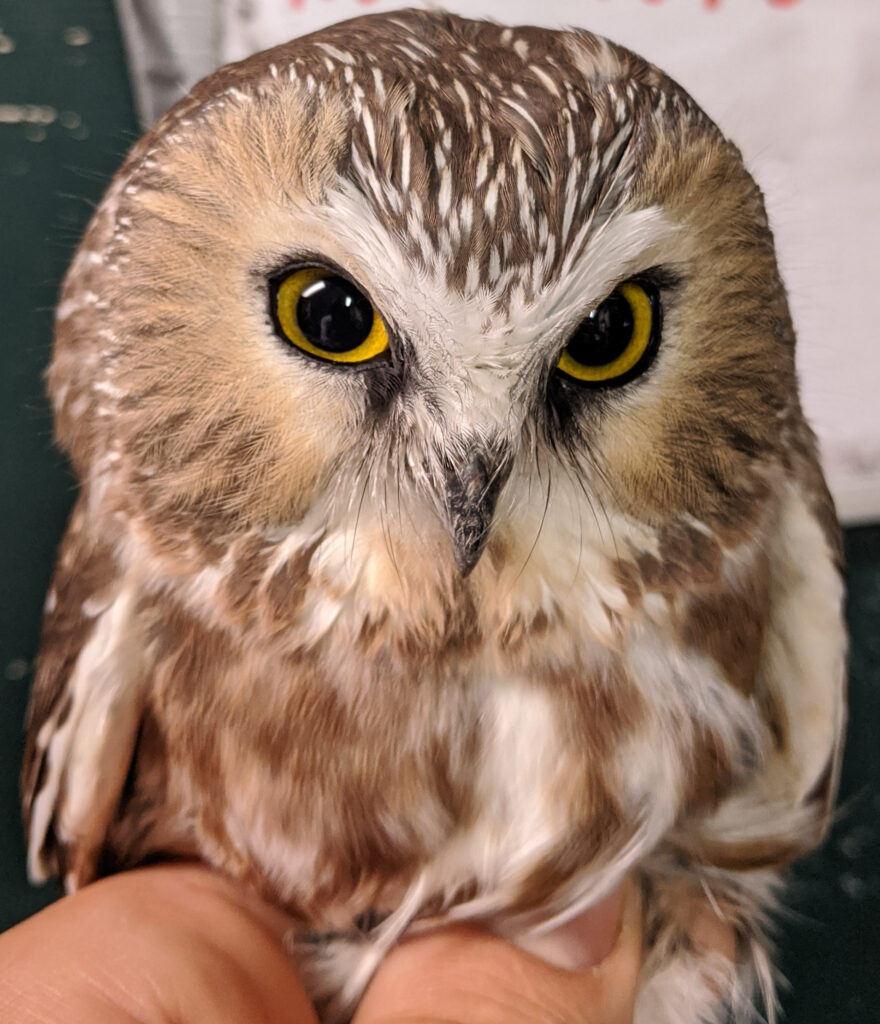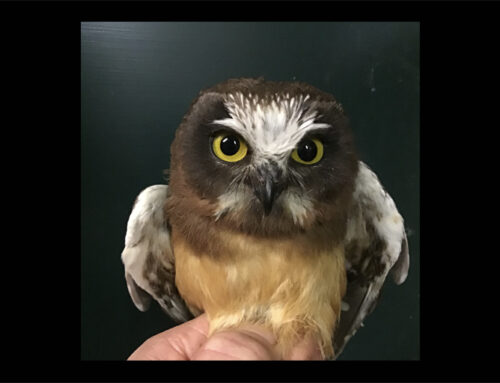
Northern Saw-whet Owl
This week was a bit of a rollercoaster with a night where we banded zero owls followed by a night where we banded 15 Northern Saw-whet Owls!
Other notes of interest include having recaptures of two Northern Saw-whet Owls previously banded here in 2019! The first was banded during the summer season, and the second was banded during the fall — almost two years to the day of its recapture (photo above)!
Recaptures are an important part of banding and provide a wealth of information about both the individual owl and the species as a whole. As Owl Banders Kate Maley and Eliana Fierro-Calderón blogged last fall:
“Each of these birds is processed the same as a new bird except that we record the existing band number rather than adding a new one. The Bird Banding Lab manages the data submitted by banding stations around the country. Using that nine-digit identification number, we can learn where the bird was initially banded and some of the basic data recorded (e.g., how old it was). Recaptured birds can provide all sorts of important information! First, it gives us insight into where birds are going — one past WPBO recap was caught over 1,400 kilometers away! We can also keep track of how long birds live. For example, did you know that the oldest known wild Northern Saw-whet Owl was over nine years and five months old? (If you’re curious how long birds of other species live, you can check out the Bird Banding Lab’s Longevity Records.) If we catch a bird that was initially banded at WPBO, we can look back at our records to see how the data have changed.”
~ Tim Baerwald and Byron de-Yampert
You can read the owl banding weekly blog post and follow WPBO’s social media (Facebook, Instagram, and Twitter) for highlights this season from Lead Owl Bander Tim Baerwald and Assistant Owl Bander Byron de-Yampert.
Owl Banding Presentations — We apologize, but live education demonstrations of our owl banding program will not be offered this season.



